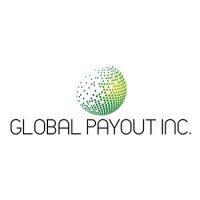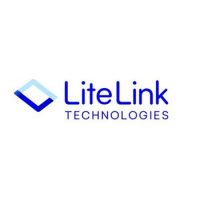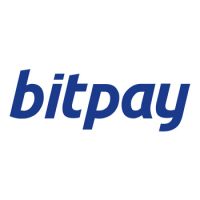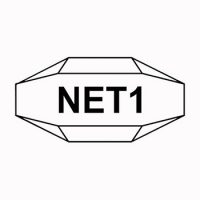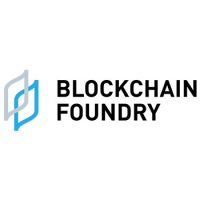Blockchain
Zenabis Global Announces Third Quarter 2019 Financial Results

Zenabis Global Inc. (TSX:ZENA) (“Zenabis” or the “Company“) today announced its financial results for the third quarter ended September 30, 2019. All amounts, unless specified otherwise, are expressed in Canadian dollars.
Key Highlights
During the three months ended September 30, 2019, Zenabis:
- Cultivated 5,239 kg of dried cannabis, outperforming revised design capacity by 25.7%, and representing a kilogram yield increase of 112% over the previous quarter;
- Increased licensed annual production capacity by 147% from 23,100 kg to 57,000 kg as a result of receiving several key license amendments at Zenabis Atholville and the cultivation license at Zenabis Langley Site A Part 1;
- Submitted a license amendment application for Zenabis Langley for additional growing areas totaling 101,300 sq. ft. Once approved, this is expected to increase Zenabis’ licensed annual production capacity by 39,400 kg to 96,400 kg – representing a 69% further increase in annual production capacity;
- Increased net revenue per gram of cannabis sold by 13% to $4.75 from $4.22 in Q2 2019. This increase is related to the sales mix discussed below.
- Achieved an internal production cost of dried cannabis sold of $1.14 per gram compared to $0.78 per gram in Q2 2019. Cost per gram is impacted by the sales mix between dried flower and dried trim where a gram of dried flower is assigned a higher cost than a gram of dried trim. Lower sales of bulk trim in the quarter resulted in a higher internal production cost per gram of dried cannabis sold.
Andrew Grieve, Chief Executive Officer of Zenabis, stated, “In this quarter, Zenabis substantially expanded its licensed capacity and cultivation yields, raised $65 million in new financing, and submitted further license amendments that, once approved, will increase annual cultivation capacity by over 300% compared to the second quarter of 2019. These license amendments at Zenabis Altholville and Zenabis Langley, expansion into the Ontario market, and the launch of a new value brand Re-Up meaningfully improved our competitive position for the fourth quarter and beyond.”
Mr. Grieve added, “We continue to make substantial progress toward achieving our planned licensed annual production capacity of 143,200 kg. By the end of 2019, we expect to have 111,200 kg of capacity licensed or submitted for licensing. In addition, we resolved our packaging challenges in September of 2019. As a result, October provincial recreational shipments increased by 93% to 830 kg versus 430 kg in September of 2019, and primary dried flower packaging output per day increased by 101% to an average of 10,636 units per day in October 2019 versus 5,282 units per day in September 2019. Over the first 10 days of November, this figure increased to an average of 18,099 units per day.”
“I am pleased to say that Zenabis shipped more product in the first half of the fourth quarter of 2019 than was shipped during the entirety of the third quarter. We believe this reflects consumer appreciation for our high-quality, high-value products, and market appreciation for our ability to compete with the illicit market on price with our value brand, Re-up.”
“We continue to focus on construction and licensing of Zenabis Langley and have modified the construction plan for Part 2C to be substantially complete in the first quarter of 2020. We believe this is a prudent, responsible approach to reaching our target total annual cultivation capacity of 143,200 kg of dried cannabis upon completion of licensing at Zenabis Langley, which is anticipated for the second quarter of 2020.”
Third Quarter 2019 Highlights and Recent Developments
Construction and Licensing
- Increased the licensed annual production capacity of dried cannabis by 147% to 57,000 kg as at September 30, 2019, from 23,100 kg as at June 30, 2019;
- Substantially completed construction and licensing activities at Zenabis Atholville, at approximately $6 million below budget;
- Added an additional 9,900 kg of licensed annual production capacity at Zenabis Langley Site A – Part 1, after receiving a cultivation license from Health Canada;
- Construction of Zenabis Langley – Part 2A was substantially complete as at end of September;
- Zenabis submitted a cultivation license amendment application for Zenabis Langley – Part 2A in September 2019. This includes additional growing areas totaling 101,300 sq. ft., which would increase Zenabis’ licensed annual production capacity by 39,400 kg to 96,400 kg once approved by Health Canada; and
- Submitted a sales license application for Zenabis Stellarton which will increase the Company’s fulfilment capacity.
A summary of the changes in Zenabis’ licensed annual production capacity between June 30, 2019 and September 30, 2019 is provided below:
|
Licensed Annual Production Capacity (kg) |
|||||||||||||||
|
Zenabis |
Zenabis |
Zenabis |
Zenabis |
Total |
|||||||||||
|
Q2 | June 30, 2019 |
22,300 |
— |
800 |
— |
23,100 |
||||||||||
|
Receipt of Zenabis Atholville Phase 2C – Part 1 License Amendment |
9,800 |
— |
— |
— |
9,800 |
||||||||||
|
Receipt of Zenabis Langley Site A – Part 1 Cultivation License |
— |
9,900 |
— |
— |
9,900 |
||||||||||
|
Zenabis Atholville Capacity Amendment (1) |
11,200 |
— |
— |
— |
11,200 |
||||||||||
|
Receipt of Zenabis Atholville Phase 2C – Part 2 License Amendment |
3,000 |
— |
— |
— |
3,000 |
||||||||||
|
Q3 | September 30, 2019 |
46,300 |
9,900 |
800 |
— |
57,000 |
||||||||||
|
(1) |
Net based on 22,300 kg (Zenabis Atholville licensed annual production capacity as at June 30, 2019) plus 9,800 kg (licensed annual production capacity from the Phase 2C – Part 1 license amendment) multiplied by 1.35 (1 + 35%, the outperformance from the second quarter of 2019 as described Zenabis’ MD&A for the three months ending June 30, 2019). |
Business Development
- Entered into a definitive agreement with a Canadian beverage technology company that will supply Zenabis with water soluble, odourless, flavourless and colourless cannabis-infused inputs, which the Company plans to use in the production of cannabis-infused beverages and other cannabis-infused products;
- Entered into a supply agreement with the Ontario Cannabis Retail Corporation to supply adult-use recreational cannabis to retailers throughout the province;
- Launched Re-up, Zenabis’ low cost, high value, cannabis brand offering various cannabis products to consumers at a price competitive with the illicit market (www.reupcannabis.ca);
- Entered into a definitive agreement with PAX Labs, Inc. (“PAX”), under which Zenabis will supply cannabis extracts for PAX Era Pods designed for use with the PAX Era vaporizer device; and
- Entered into a cultivation agreement with Tantalus Labs Ltd. (“Tantalus Labs”), pursuant to which Zenabis will grow and harvest cannabis plants from clones provided by Tantalus Labs.
Financing
- Raised $30 million in non-dilutive financing via a pre-paid supply agreement with High Park Holdings Ltd.(“High Park”), a wholly-owned subsidiary of Tilray, Inc.;
- Raised $10 million in non-dilutive financing via a pre-paid supply agreement with Starseed Medicinal Inc.(“Starseed”);
- Raised $25 million in new senior secured debt financing; and
- Announced a rights offering to holders of its common shares that is intended to raise up to $20.8 million, with insiders of Zenabis committing to acquire ~30% of the common shares available under the rights offering for a total of $6.2 million in proceeds.
Selected Financial Data
|
Financial Results |
Q3 | 2019 |
Q2 | 2019 |
% Change |
Q3 | 2018 (4)(6) |
|||||||||
|
Gross revenue |
$ |
13,423,175 |
$ |
26,470,481 |
(49) |
$ |
3,663,817 |
||||||
|
Net revenue (2) |
12,001,692 |
25,049,709 |
(52) |
3,581,705 |
|||||||||
|
Gross margin before fair value adjustment |
5,060,709 |
8,383,766 |
(40) |
794,095 |
|||||||||
|
Operating expenses |
18,993,084 |
18,925,521 |
— |
4,727,986 |
|||||||||
|
Operating loss |
(980,967) |
(7,902,956) |
N/A |
(2,352,414) |
|||||||||
|
Other (expenses) income |
(5,018,699) |
(9,048,313) |
(45) |
210,798 |
|||||||||
|
Net loss |
(5,831,279) |
(18,498,388) |
(67) |
(2,141,616) |
|||||||||
|
Adjusted EBITDA (5) |
(9,201,192) |
(6,296,335) |
46 |
(2,971,878) |
|||||||||
|
Loss per share, basic and diluted |
$ |
(0.03) |
$ |
(0.09) |
(67) |
$ |
(0.01) |
||||||
|
Balance Sheet |
|||||||||||||
|
Total assets |
$ |
378,441,665 |
$ |
329,244,361 |
15 |
$ |
69,258,202 |
||||||
|
Inventory |
28,344,946 |
17,943,802 |
58 |
4,427,029 |
|||||||||
|
Biological Assets |
13,814,139 |
$ |
8,047,081 |
72 |
1,294,563 |
||||||||
|
Operational Results – Cannabis |
|||||||||||||
|
Grams of cannabis sold (3) |
1,491,729 |
1,720,262 |
(13) |
N/A |
|||||||||
|
Grams of internally produced cannabis sold (3) |
1,240,916 |
1,387,741 |
(11) |
N/A |
|||||||||
|
Net revenue per gram of cannabis sold (5) |
$ |
4.75 |
$ |
4.22 |
13 |
N/A |
|||||||
|
Net revenue per gram of cannabis flower, oil and pre-rolls sold (5) |
5.12 |
4.97 |
3 |
N/A |
|||||||||
|
Net revenue per gram of cannabis trim sold (5) |
2.25 |
2.25 |
— |
N/A |
|||||||||
|
Cost of goods sold per gram of cannabis sold (5) |
2.32 |
2.13 |
9 |
N/A |
|||||||||
|
Cost to internally produce a gram of cannabis sold (5) |
$ |
1.14 |
$ |
0.78 |
46 |
N/A |
|||||||
|
(2) |
Net revenue represents our total gross revenue exclusive of excise taxes levied by the Canada Revenue Agency (“CRA”) on the sale of medical and recreational cannabis products effective October 17, 2018. |
|
(3) |
Includes oil sales. Oil sales are converted at a standard rate of 9 milliliters per gram for recreational oil. |
|
(4) |
Due to the accounting presentation resulting from the RTO, no comparable information is presented for the Propagation and Other segments. For prior period information please refer to the financial statements previously filed by Bevo Agro Inc. on SEDAR. |
|
(5) |
Refer to the “Non-GAAP Financial Measures” section for reconciliation to the IFRS equivalent. |
|
No meaningful comparison can be drawn between 2019 periods and corresponding periods in 2018 due to the fundamental change in the nature of the Cannabis operations (moving from limited medical production to large scale commercial production for adult use recreational and medical markets). |
|
|
(6) |
No meaningful comparison can be drawn between 2019 periods and corresponding periods in 2018 due to the fundamental change in the nature of the Cannabis operations (moving from limited medical production to large scale commercial production for adult use recreational and medical markets). |
Adjusted EBITDA Reconciliation (7)
|
Q3 | 2019 |
Q2 | 2019 |
|||
|
Net loss |
$ (5,381,279) |
$ (18,498,388) |
||
|
Changes in fair value of inventory sold |
6,760,956 |
10,013,747 |
||
|
Unrealized gain on changes in fair value of biological assets |
(19,712,364) |
(12,652,546) |
||
|
Share-based compensation |
2,004,544 |
2,142,433 |
||
|
Depreciation and amortization |
2,726,639 |
2,102,987 |
||
|
(Gain) loss on revaluation of derivative liabilities |
(497,789) |
4,551,807 |
||
|
Finance and investment expense (income) |
173,986 |
98,557 |
||
|
Interest Expense |
4,689,124 |
3,751,166 |
||
|
Loss (gain) on sale of assets |
21,675 |
184,249 |
||
|
Loss due to event |
1,186,692 |
3,083,793 |
||
|
Insurance proceeds |
(492,995) |
(2,683,541) |
||
|
Foreign exchange (gain) loss |
(61,994) |
62,282 |
||
|
Current income tax expense |
342,758 |
521,371 |
||
|
Deferred income tax (recovery) expense |
(511,145) |
1,025,748 |
||
|
Adjusted EBITDA |
$ (9,201,192) |
$ (6,296,335) |
||
|
(7) |
Adjusted EBITDA is net income (loss) before interest expense; finance and investment income; gain (loss) on revaluation of derivative liability; loss on sale of assets; income taxes; depreciation and amortization; share-based compensation; acquisition costs; and the fair value adjustment to biological assets and inventory. |
Summary of Third Quarter 2019 Financial Results
The Company’s financial results for the third quarter ended September 30, 2019, are presented in accordance with International Financial Reporting Standards (“IFRS”) as issued by the International Accounting Standards Board, applicable to the preparation of interim financial statements, including IAS 34, Interim Financial Reporting. As this is Zenabis’ second quarterly financial report since the public listing of its shares in January 2019, periodic financial results comparisons are sequential.
For the three months ended September 30, 2019, Zenabis recorded net revenue of $12.0 million, comprised primarily of $7.1 million and $4.5 million in the Cannabis and Propagation segments, respectively. Comparatively, in the three months ended June 30, 2019, the Company recorded net revenue of $7.3 million and $17.4 million in the Cannabis and Propagation segments, respectively. The sequential decrease in net revenue in the Cannabis segment was driven by a reduction in bulk shipments of trim and packaging issues reducing product available for provincial counterparties in August and September. The sequential decrease in net revenue in the propagation business was expected and driven by the varying levels of activity in the growing cycles of the vegetable greenhouse crops, the bedding plant and flower seasons as well as the timing of customer orders, the varying cycles of the greenhouse vegetable industry and the seasonality of the customer’s planting season.
Gross margin before fair value adjustment totaled $5.1 million during the three months ended September 30, 2019, and included $3.6 million and $1.1 million in Cannabis and Propagation gross margin before fair value adjustments, respectively (51% and 24% of net revenue by segment, respectively). Comparatively, in the three months ended June 30, 2019, the Company recorded Cannabis and Propagation gross margin before fair value adjustments of $3.6 million and $4.5 million, respectively (50% and 25% of net revenue by segment, respectively).
Total operating expenses for the three months ended September 30, 2019, were $19.0 million, compared to $18.9 million in the three months ended June 30, 2019. Gain on the revaluation of derivative liability was $0.5 million in Q3 2019 compared to a gain of $4.6 million for Q2 2019, which was the result of fluctuations in the Company’s share price.
Adjusted EBITDA has continued to show a loss, primarily due to the operational costs incurred to build-out Zenabis’ operational capacity to achieve the planned design capacity of its various facilities. Adjusted EBITDA has increased in comparison to the three months ended June 30, 2019, due to additional expenses. Q3 2019 adjusted EBITDA was ($9.2 million), compared to ($6.3 million) in Q2 2019.
The Company recorded a net loss for the three months ended September 30, 2019, of $6.0 million, or $0.03 loss per common share, compared to a net loss of $18.5 million, or $0.09 loss per common share, for the three months ended June 30, 2019.
Cash on hand increased from $17.0 million as at December 31, 2018, to $27.9 million as at September 30, 2019. The increase in cash was mainly attributable to cash used in operating activities of $45.3 million and investing activities of $92.3 million, offset by cash received from financing of $148.5 million. During the three months ended September 30, 2019, Zenabis secured $40.0 million in financing via pre-paid supply agreements with High Park and Starseed and raised $25.0 million in new senior secured debt financing in August 2019.
Cautionary Note Regarding Non-GAAP Measures
This news release refers to certain financial performance measures that are not defined by and do not have a standardized meaning under IFRS (termed “Non-GAAP measures”). These Non-GAAP measures are defined in the MD&A. Non-GAAP measures are used by management to assess the financial and operational performance of the Company. The Company believes that these Non-GAAP measures, in addition to conventional measures prepared in accordance with IFRS, enable investors to evaluate the Company’s operating results, underlying performance and prospects in a similar manner to the Company’s management. As there are no standardized methods of calculating these Non-GAAP measures, the Company’s approaches may differ from those used by others, and accordingly, the use of these measures may not be directly comparable. Accordingly, these Non-GAAP measures are intended to provide additional information and should not be considered in isolation or as a substitute for measures of performance prepared in accordance with IFRS.
Consolidated Financial Statements and MD&A
The results discussed herein are a summary and are qualified in their entirety by reference to the Company’s unaudited interim condensed consolidated financial statements and accompanying notes (the “Financial Statements“) for the three and nine months ended September 30, 2019 and 2018 and related MD&A (the “MD&A“) of financial condition and results of operations, copies of which are available under the Company’s profile on SEDAR at www.sedar.com and on the Investor Relations section of the Company’s website at https://www.zenabis.com. Readers of this press release are encouraged to refer to the Financial Statements and the MD&A for complete details about Zenabis’ financial results for the period ended September 30, 2019.
SOURCE Zenabis Global Inc.
Blockchain
Blocks & Headlines: Today in Blockchain – May 21, 2025

In an era defined by rapid innovation and regulatory shifts, today’s blockchain briefing spotlights five pivotal developments: enterprise-grade data integration, municipal crypto pilots, state-level policy hearings, AI-powered token growth, and secure communications on a public ledger. Across these stories, three key trends emerge:
-
Enterprise Adoption & Data Integration
-
Government Experimentation & Oversight
-
AI & Security Innovations in Crypto
Below, we dissect each story’s essence, unpack its broader implications, and offer opinion-driven insight for Web3 stakeholders.
1. Space and Time Joins Forces with Microsoft Fabric
Source: Chainwire / The Defiant
On May 20, 2025, Space and Time Labs (SXT)—a zero-knowledge data platform backed by Microsoft’s M12 Ventures—announced integration of its multichain index (Bitcoin, Sui, Ethereum) into Microsoft Fabric’s OneLake environment. This partnership delivers real-time, verifiable blockchain data directly within Azure, enabling developers and enterprises to build data-driven Web3 and AI applications without custom pipelines.
Opinion: Embedding verifiable on-chain data into mainstream analytics tools marks a watershed moment. As traditional enterprises crave decentralized insights, Fabric’s native access to SXT’s ZK-proven data could accelerate blockchain analytics, foster hybrid cloud-Web3 solutions, and reduce vendor lock-in. Expect more legacy tech giants to pursue similar alliances.
2. New York City Eyes Crypto for Taxes & Records
Source: DL News
Mayor Eric Adams revealed plans to form a Digital Assets Advisory Council to explore crypto-based payments for municipal services, including taxes, birth/death certificates, and land records. While specifics remain under wraps, Adams highlighted zero-knowledge proofs as a privacy-preserving tool for public documentation on distributed ledgers.
Opinion: New York’s initiative signals growing municipal appetite for blockchain beyond investments. By potentially accepting tax payments in crypto and securing vital records on-chain, NYC could pioneer use cases that blend transparency with privacy. However, pilot programs must rigorously address volatility, regulatory compliance, and digital inclusion to avoid disenfranchising underserved communities.
3. Wyoming Committee Explores Blockchain, AI & Right-to-Repair
Source: Wyoming Public Media
During its first interim meeting (May 14–15, Jackson Hole), Wyoming’s Select Committee on Blockchain, Financial Technology and Digital Innovation reviewed the state’s proposed Wyoming Stable Token—tethered 1:1 to USD—and examined AI governance and right-to-repair legislation. The Stable Token Commission anticipates a July 4 alpha launch, while lawmakers debated CBDC distinctions, tokenized real-world assets, and consumer repair rights.
Opinion: Wyoming continues to cement its reputation as a blockchain haven. Explicit carve-outs distinguishing stablecoins from CBDCs, coupled with regulatory sandboxes for AI and repair laws, underscore a holistic approach to innovation. Other states should monitor Wyoming’s alpha testing outcomes to inform balanced policy frameworks that nurture Web3 while safeguarding consumer interests.
4. AI Tokens Surge in Crypto’s New Tango
Source: The Economic Times
Himanshi Lohchab reports that AI-centric utility tokens—built to autonomously execute services like compute renting (Render), predictive analytics (SingularityNET), and data marketplaces (Ocean Protocol)—have seen market caps soar from $2.7 billion to nearly $30 billion within a year. Key players include Near Protocol’s AI modules, ICP, The Graph, and emerging AI agents that generate revenue per usage. Institutional interest from Grayscale, BlackRock, and Fidelity further validates the trend.
Opinion: The AI-blockchain convergence is no fleeting fad. AI tokens promise programmable revenue streams and decentralized toolchains, but they also introduce autonomous risk vectors—buggy smart contracts, accountability gaps, and regulatory ambiguity. Security audits, standardized interoperability protocols, and clear legal frameworks will be crucial to sustain investor confidence.
5. BSV Association Selects Binarii Labs for Secure Communications
Source: CoinGeek (via PRNewswire)
The BSV Association has designated Binarii Labs to implement BinariiDSM, an encrypted file exchange and messaging suite that logs proofs of record on the BSV blockchain. This integration ensures immutable audit trails, data resilience, and end-to-end confidentiality for enterprises seeking verifiable trust without centralized intermediaries.
Opinion: As data privacy regulations tighten globally, blockchain-anchored communication platforms like BinariiDSM offer a compelling alternative to legacy VPNs and secure email. By immutably recording metadata on-chain, organizations can demonstrate compliance, simplify audits, and deter insider threats. Look for BSV’s secure-messaging model to inspire similar offerings on other smart-contract platforms.
Conclusion: Navigating a Dynamic Blockchain Frontier
Today’s stories reaffirm that blockchain is no longer an experimental niche—it’s permeating analytics, public services, legislative agendas, tokenomics, and secure communications. To thrive:
-
Forge Strategic Alliances: Enterprises should partner with ZK and data-fabric innovators to embed blockchain insights into their analytics stacks.
-
Pilot Pragmatically: Municipalities must balance visionary crypto use cases with compliance, volatility management, and equitable access.
-
Craft Balanced Policy: States can emulate Wyoming’s sandbox approach—distinguishing stablecoins from CBDCs, while addressing AI and repair rights.
-
Secure the Autonomous Agent Era: As AI tokens multiply, enforce rigorous security audits and interoperability standards.
-
Leverage On-Chain Trust: Consider blockchain-anchored communications for immutable audit trails and enhanced data resilience.
By embracing these actions, organizations and policymakers can harness blockchain’s transformative power while mitigating emerging risks.
The post Blocks & Headlines: Today in Blockchain – May 21, 2025 appeared first on News, Events, Advertising Options.
Blockchain
Hair Transplant Market To Worth Over US$ 41.01 Billion By 2033 | Astute Analytica
Blockchain
VanEck Prepares to Launch PurposeBuilt Fund to Invest in Real-World Applications on Avalanche
-

 Blockchain Press Releases6 days ago
Blockchain Press Releases6 days agoFintica AI and Mima Wallet Announce Strategic Partnership and Launch Joint Venture, Fintica Crypto Ltd
-

 Blockchain6 days ago
Blockchain6 days agoBDM Digital Initiates Promising Dialogue with Stanford Law School in Pursuit of Strategic Partnerships in Silicon Valley
-

 Blockchain6 days ago
Blockchain6 days agoBlocks & Headlines: Today in Blockchain – May 15, 2025 (BTC’s Push, Pi Network Fund, Stablecoin Levers, JPM Pilot, OKX × Man City)
-
Blockchain6 days ago
Wen Acquisition Corp Announces the Pricing of $261,000,000 Initial Public Offering
-
Blockchain5 days ago
Mercurity Fintech’s Subsidiary Grows Cross-Border Business Advisory Services with New Asia-Pacific Healthcare Client Engagement
-

 Blockchain5 days ago
Blockchain5 days agoSaudi Arabia Loan Aggregator Market Report 2025: Retail Digital Payments Hit 70% as Tech Adoption Transforms Saudi Financial Services – Competition, Forecast & Opportunities to 2030
-

 Blockchain Press Releases6 days ago
Blockchain Press Releases6 days agoHTX Hot Listings Week 6 May 2025: Top Gainer Up 521% as Bitcoin Breaks $100K Again
-

 Blockchain5 days ago
Blockchain5 days agoBlocks & Headlines: Today in Blockchain – May 16, 2025



















